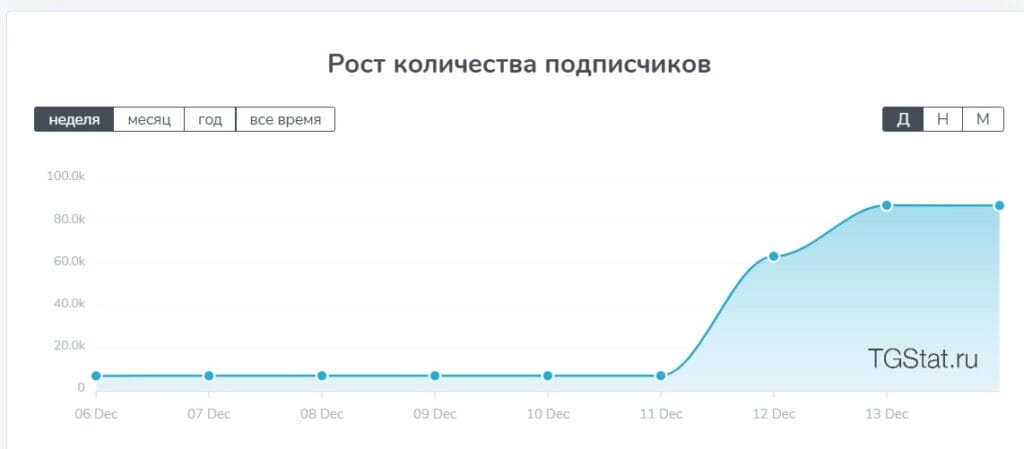After billions of unsuccessful attempts to take down Kursiv.Media website bots have switched to Kursiv’s channel on Telegram

Around 90,000 face accounts (bots) have signed up to the Kursiv.Media Telegram channel over the past two days. Before that, from December 6 to December 11, Kursiv.Media servers were under DDOS attacks with more than 1.3 billion requests from bots. As a result, the website wasn’t available on several occasions. The media outlet’s channel on Telegram has also been blocked.
What has happened with the Kursiv.Media Telegram channel? The edition’s IT department has managed to stop the registration of new bots. Currently, the IT team is analyzing the channel’s followers and deleting fake accounts.
The TGStat data has shown the number of followers of Kursiv.Media’s Telegram channel soared sharply over the past several days due to hostile activities by perpetrators.

«It appears that when perpetrators realized that their resource-consuming attacks on our servers have failed, they have switched to alternative options trying to hurt our edition,» Mira Khalina, editor-in-chief of Kursiv.Media said.
Why would someone attack a Telegram channel? Usually, a massive addition of fake accounts to a Telegram channel is used for its discreditation or as a pretext for lodging a complaint against Telegram with a demand to block the channel.
Attacks against the website and other Kursiv.Media resources
The website and some other Kursiv.Media resources have been under massive attacks orchestrated by unidentified individuals since December 6, 2023, 6:00 p.m. (Astana time). The company’s technical team identified multiple attacks of three types:
– DDOS-attacks. Starting from December 6, the number of such requests grew from 600,000 to 1 million each day to 300 to 400 million requests a day, according to https://www.cloudflare.com/. As a result, from December 6 to December 11, the number of requests to our server increased to 1.3 billion or 400 times more than usual;
– Tampering attempts against our corporate mail service and servers;
– Phishing attacks: there were attempts to send our employees letters from fake email addresses that were posing as corporate mail.
What kind of consequences have the hacker attacks had? Massive growth of requests to our server caused inaccessibility of the Kursiv.Media website on several occasions. Moreover, the edition reported attacks on its corporate mail and phishing attacks. Kursiv’s account on Instagram has also been blocked.
However, the quick and effective actions of the IT department and security service of Kursiv helped to avoid critical failures of the website. It is obvious now that all these quite expensive attacks (the cost of such an attack can be about hundreds of thousands of dollars) haven’t reached their goal.
Who was behind the attacks? Even though we aren’t sure who was behind these attacks, we can say that over the past several months Kursiv.Media received multiple unofficial requests demanding us not to cover specific topics.
Other similar attacks on media outlets in Kazakhstan
Several Telegram channels in Kazakhstan, for example, t.me/kozachkow, also reported similar attacks in the past. More generally, Kursiv isn’t the first media outlet that suffered from targeted attacks to take down the media’s IT infrastructure. Inbusiness, Kaztag and Nege.kz have also reported DDOS attacks on their websites over the past several weeks.
Last year, the editorial office of Orda.kz reported unprecedented pressure, including DDOS attacks. Some of their well-known journalists even received personal threats. However, law enforcement agencies managed to identify the perpetrators of those attacks, while it is still unknown who was behind the recent attacks on the media.
«Unfortunately, attempts to put pressure on the media, sometimes with the help of illegal methods, have been gradually becoming a problem that occurs over and over again. Even though perpetrators may have different goals in any specific case, it is obvious that their strategic goal is to take over mass media. We believe that this is unacceptable,» Khalina underlined.
She believes that the media industry participants, state agencies and civil society should combine their efforts to prevent similar activities from happening ever again.

